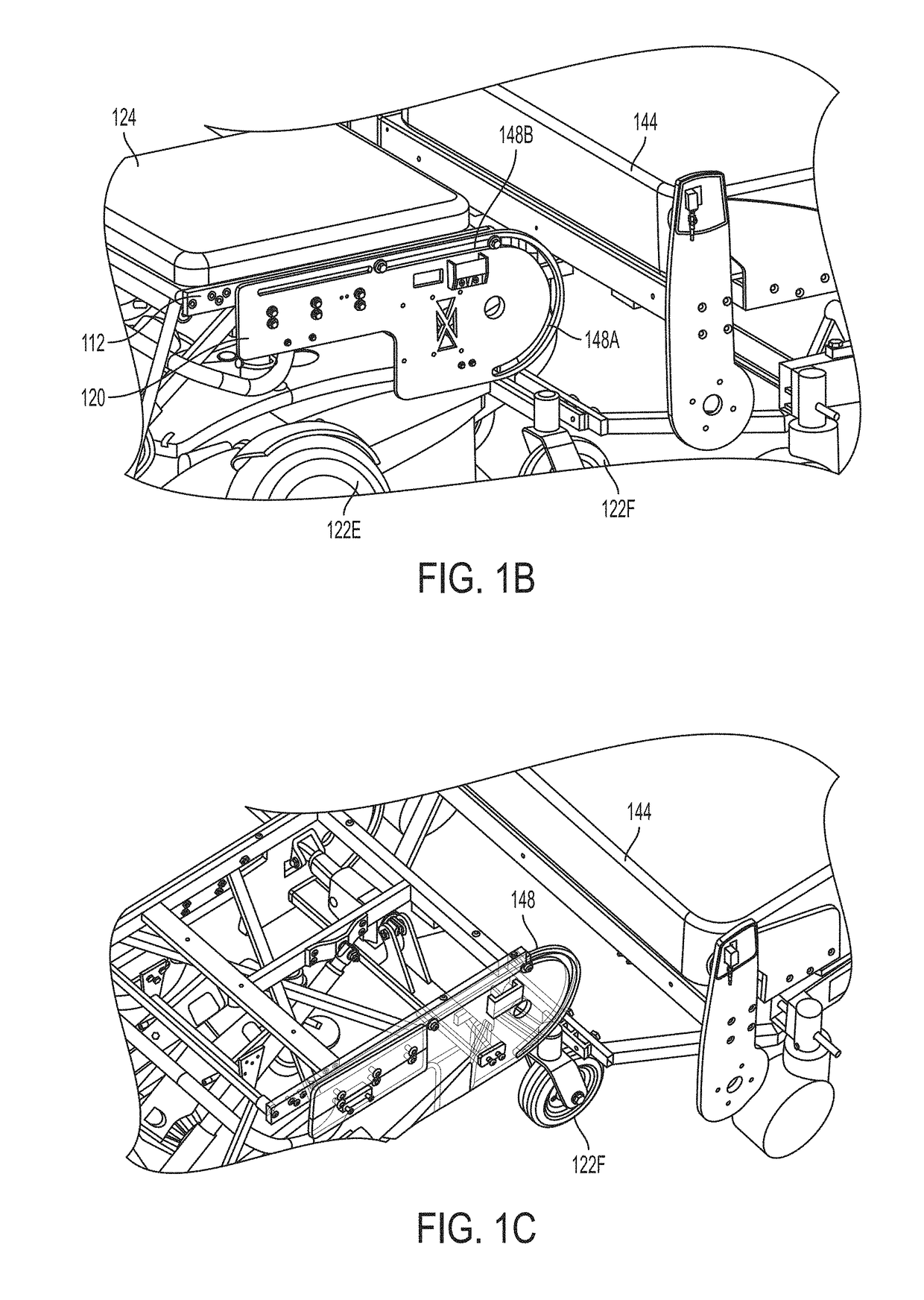Systems and methods for powered wheelchair personal transfer
- Summary
- Abstract
- Description
- Claims
- Application Information
AI Technical Summary
Benefits of technology
Problems solved by technology
Method used
Image
Examples
Embodiment Construction
[0038]FIG. 1A is an isometric view of a patient transfer system 100 including a rollable chair 104 (also depicted separately in FIG. 1F) and a bed 108, according to an illustrative embodiment of the invention. The rollable chair 104 includes a first frame 112, a second frame 116 coupled to the first frame 112, and a third frame 120 coupled to the first frame 112. The frames 112, 116, 120 can be made of, for example, steel, aluminum, another metal or metal alloy, or a composite material such as carbon fiber. The rollable chair 104 also includes several wheels (e.g., wheels 122A-F as shown in FIGS. 1A-1E). The base unit 110 can be a commercially available pedestal seat powered wheelchair base. In some embodiments, the wheels 122A, 122F (rear wheels) help to guide the rollable chair 104 toward the bed 108. In some embodiments, the wheels 122B, 122E (drive wheels) are larger and help to power the rollable chair 104. In some embodiments, the wheels 122C and 122D (front wheels) help to gu...
PUM
 Login to View More
Login to View More Abstract
Description
Claims
Application Information
 Login to View More
Login to View More - R&D
- Intellectual Property
- Life Sciences
- Materials
- Tech Scout
- Unparalleled Data Quality
- Higher Quality Content
- 60% Fewer Hallucinations
Browse by: Latest US Patents, China's latest patents, Technical Efficacy Thesaurus, Application Domain, Technology Topic, Popular Technical Reports.
© 2025 PatSnap. All rights reserved.Legal|Privacy policy|Modern Slavery Act Transparency Statement|Sitemap|About US| Contact US: help@patsnap.com



